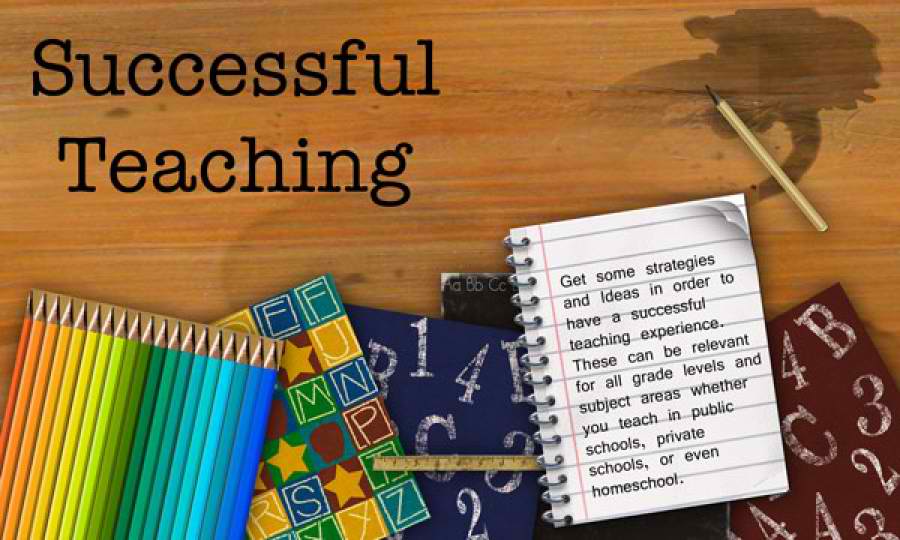Students have different learning styles, backgrounds, abilities, and interests. The most effective teachers adapt their methods to engage every learner. Education whether art or science; the c. Effective teaching is the cornerstone of successful learning experiences.

Teaching is a complex profession. Small tweaks in approach can have big impacts. Evaluating and enhancing your practice is crucial. Increase student engagement, enhance comprehension, and create a dynamic learning environment by employing. In this article top 10 effective teaching strategies are mentioned.
1. Appropriate Use Of Technology
Tablets, interactive whiteboards, digital games, podcasts, and online simulations are all tools . The key is balance. Avoid over-relying on technology at the expense of other valuable teaching methods.
Here are some best practices for integrating technology:
- Provide a blend of high-tech, low-tech, and no-tech activities. Mix things up to maintain student engagement.
- Teach students to use technology. Discuss all facets such as cyber bullying, plagiarism, and source credibility.
- Track student usage. Set time limits for educational apps and games to avoid overuse. – Address diverse learner needs.
- Use multimedia content to bring lessons to life. Well-chosen videos, simulations, and images boost interest.
- Encourage creativity through digital projects like animated videos, blogs, and podcasts.
Avoid pitfalls like distractions or overuse by following best practices.
2. Encourage Student Participation
Students learn better by doing.
Here are effective ways to promote participation:
- Foster teamwork through group projects, labs, and peer-tutoring. Help students learn cooperation and conflict resolution skills.
- Let students shine through speeches, debates, visual presentations, and performances. Provide opportunities to speak in front of others.
- Conduct engaging experiments and investigations. Guide students through hands-on application of concepts.
- Ask open-ended questions that spark creativity and critical thinking. Praise thoughtful contributions.
- Incorporate role-playing, educational games, competitions, and physical challenges.
- Promote peer teaching and “buddy systems.” Students gain confidence when sharing expertise.
Keep participation positive and supportive. Active, student-centered learning equips students with valuable life skills while deepening lesson retention.
3. Connect With Each Student
Get to know your students’ skills, interests, backgrounds, and learning styles.
Tips for connecting include:
- Have relaxed conversations to learn about students’ hobbies, families, challenges, and goals.
- Be available before and after class to answer questions. Keep communication open.
- Personalize lessons by incorporating students’ interests and cultural heritage.
- Notice each student’s strengths and encourage them. Recognize small wins.
- Check in with struggling learners individually. Offer extra help without embarrassing anyone.
- Know their individual names and use them when praising and correcting. Eye contact conveys care.
- Share stories and use humor to seem approachable. Let your passion for teaching shine.
4. Make Learning Relevant
Help students recognize real-world relevance of skills and content.
Strategies to increase relevance include:
- Connect lessons to students’ personal interests, hobbies, and aspirations. Use pop culture references they relate to.
- Incorporate local issues, news, and community needs into assignments and discussions.
- Assign projects that solve real problems and make a difference.
- Hands-on projects, like building websites, recording podcasts, or filming documentaries enhance student’s skillset.
- Share examples of how adults use curriculum concepts in various careers. Discuss how lessons apply to the workplace.
- Foster student choice in research topics, assignments, and projects to boost engagement.
Relevant instruction also promotes problem solving, creativity, and citizenship.
5. Use Different Instruction Methods
Students have diverse learning styles. Varying your instructional strategies appeals to auditory, visual, and kinesthetic learners.
Ways to incorporate different teaching methods include:
- Lectures and direct instruction for auditory learners. Use engaging vocal tonality, rhetorical questions, examples, and multimedia.
- Discussions for auditory and interactive learners. Help both small and whole-group dialogue.
- Visual aids like charts, graphs, diagrams, timelines, videos, and slideshows for visual learners.
- Kinesthetic learning through labs, experiments, model building, demonstrations, and acting out concepts.
- Field trips, guest speakers, and community service activities to provide real-world experiences.
- Texts, novels, short stories, poetry, news articles, and online resources for enhanced reading.
- Consistent, positive reinforcement develops students’ self-confidence, engagement, and love of learning. Take time to notice small steps on each child’s unique path.
6. Provide Feedback and Celebrate Progress
- Recognition of effort and constructive feedback on performance motivate students to keep working toward success. Praise each step in the right direction.
- Strategies for feedback and celebrating progress include:
- Give specific verbal praise when students meet and exceed expectations. Applaud not just high grades but hard work, persistence, creativity, collaboration, etc.
- Write strengths-based comments on assignments. Be honest about areas needing improvement without discouraging.
- Display exemplary student work and test score improvements. Highlight milestones.
- Send positive notes home detailing admirable student conduct, qualities, and achievements.
- Award certificates, shout-outs, and privileges for academics as well as social growth.
- Track progress with stickers, points, badges, punch cards, etc. Visuals keep motivation high.
- Spotlight “Most Improved” and not just “Highest Achieving.” Recognize effort and growth.
- Display a class thermometer showing progress toward collective goals and celebrate wins.
- Consistent, positive reinforcement develops students’ self-confidence, engagement, and love of learning. Take time to notice small steps on each child’s unique path.
7. Engage The Senses
Engaging a student boosts information retention and helps accommodate diverse learning styles.
Ways to incorporate multisensory learning include:
- Auditory – lectures, music, oral stories, chants, rhymes, audiobooks, radio clips, guest speakers
- Visual – books, pictures, diagrams, maps, charts, videos, slideshows, graphic organizers
- Manipulatives, arts and crafts, building models, touching objects, sand or water tables, cooking
- Allow movement through acting, role play, gallery walks, experiments, competitions
- Provide sensory tools like fidgets, headphones, and flexible seating options
- Anchor abstract concepts through metaphors, analogies, and vivid imagery.
Multisensory learning experiences stick with students longer and accommodate diverse learning profiles. Stimulate eyes, ears, and hands to maximize engagement.
8. Make Learning Fun
Enjoyable learning makes for engaging learning.
Strategies for making learning fun include:
- Play educational games like Jeopardy, Bingo, and Kahoot to review material.
- Hold friendly competitions like spelling bees, science fairs, and math competitions.
- Use manipulatives, puzzles, blocks, Legos, and other tactile toys for hands-on learning.
- Incorporate physical challenges, races, scavenger hunts, acting out content.
- Help students create projects they’re passionate about – videos, songs, art, blogs, websites.
- Reward progress and effort with prizes, tokens, badges, privileges or extra recess time.
Engagement soars when learning incorporates excitement, creativity, and interactive challenges.
9. Promote Curiosity and Critical Thinking
Effective learning requires more than memorizing facts. Nurture students’ innate curiosity and teach investigative skills.
Strategies to promote curiosity and critical thinking include:
- Pose open-ended questions that spark imagination and discussion. Allow time for deep thought.
- Encourage problem-solving analysis – weigh evidence, find patterns, critique arguments, make inferences.
- Foster student choice in research topics. Let passions drive exploration of subjects.
- Challenge students to think – brainstorm ideas without judging initial suggestions.
- Inspire wonder through nature walks, philosophical discussions, exploration of fascinating discoveries.
10. Lead by Example
Students look to their teacher’s actions, attitudes, and behaviors as models. Leading by example demonstrates desired qualities.
Ways teachers can lead by example include:
- Modeling organization, time management, planning, and responsibility in your own work.
- Demonstrating perseverance when facing challenges. Teach resilience by overcoming struggles with calm determination.
- Practicing compassion, integrity, honesty, patience, and other virtues you wish to instill.
- Admitting mistakes with humility and explaining how you learn from errors. Show it’s okay to fail sometimes.
- Treating all students with dignity and respect, regardless of background or ability.
- Taking interest in students’ lives. Show you care about them as individuals.
Actions speak louder than words. Modeling virtuous behavior, resilience, and love of learning inspires students.
Conclusion
The most effective teachers reflect on their methods and make changes as needed. Educators can create dynamic learning environments where all types of students thrive.



